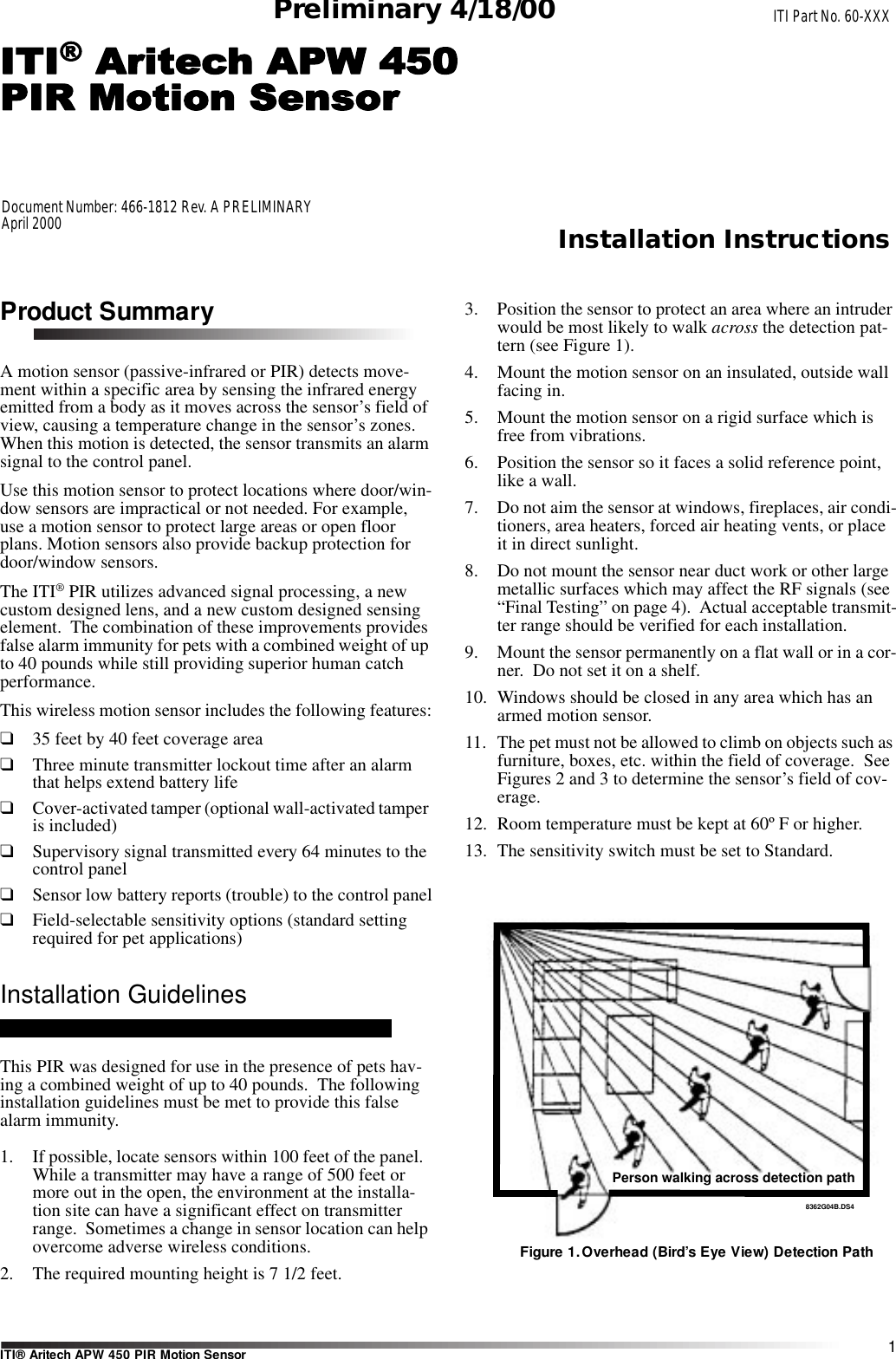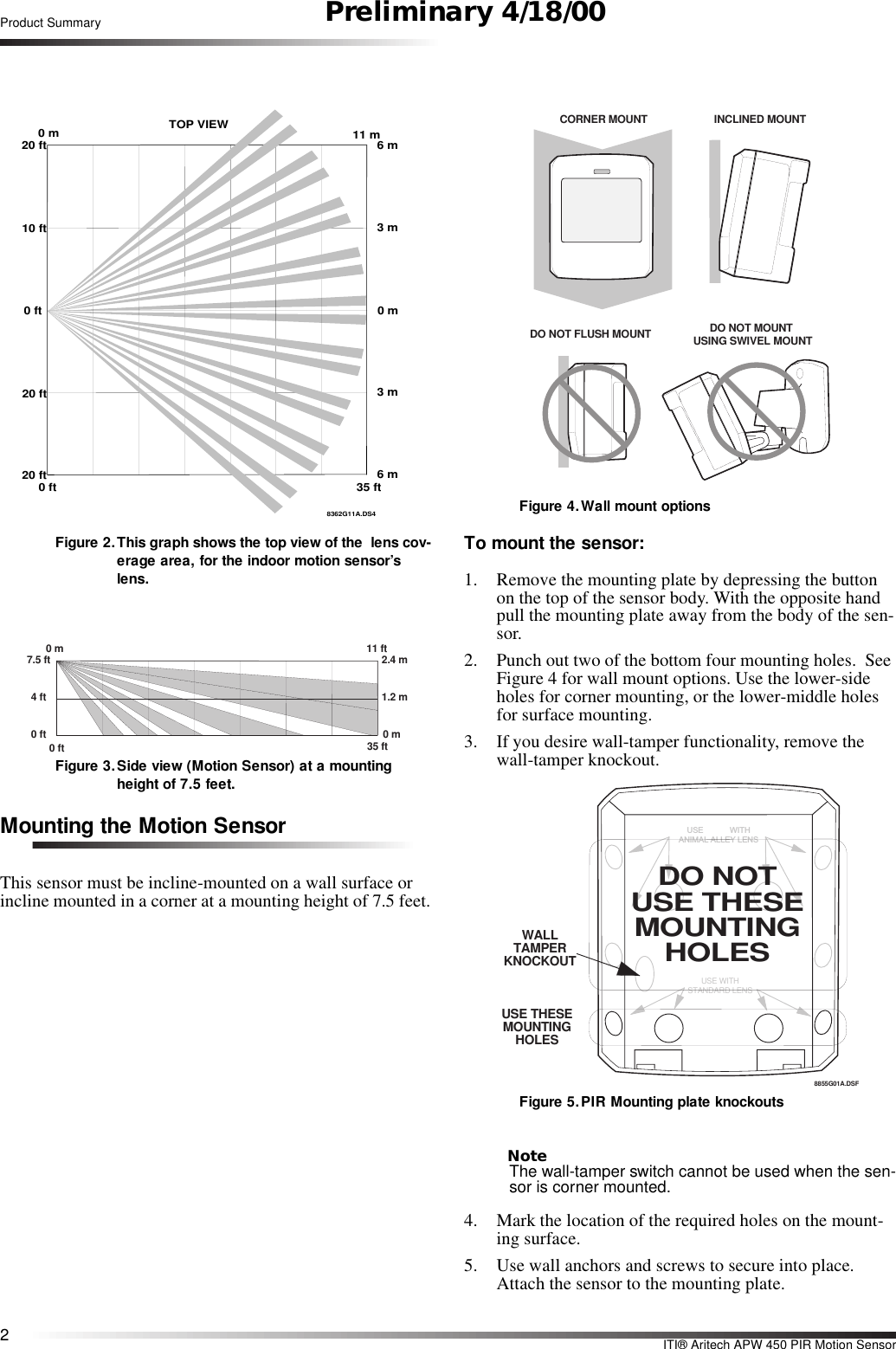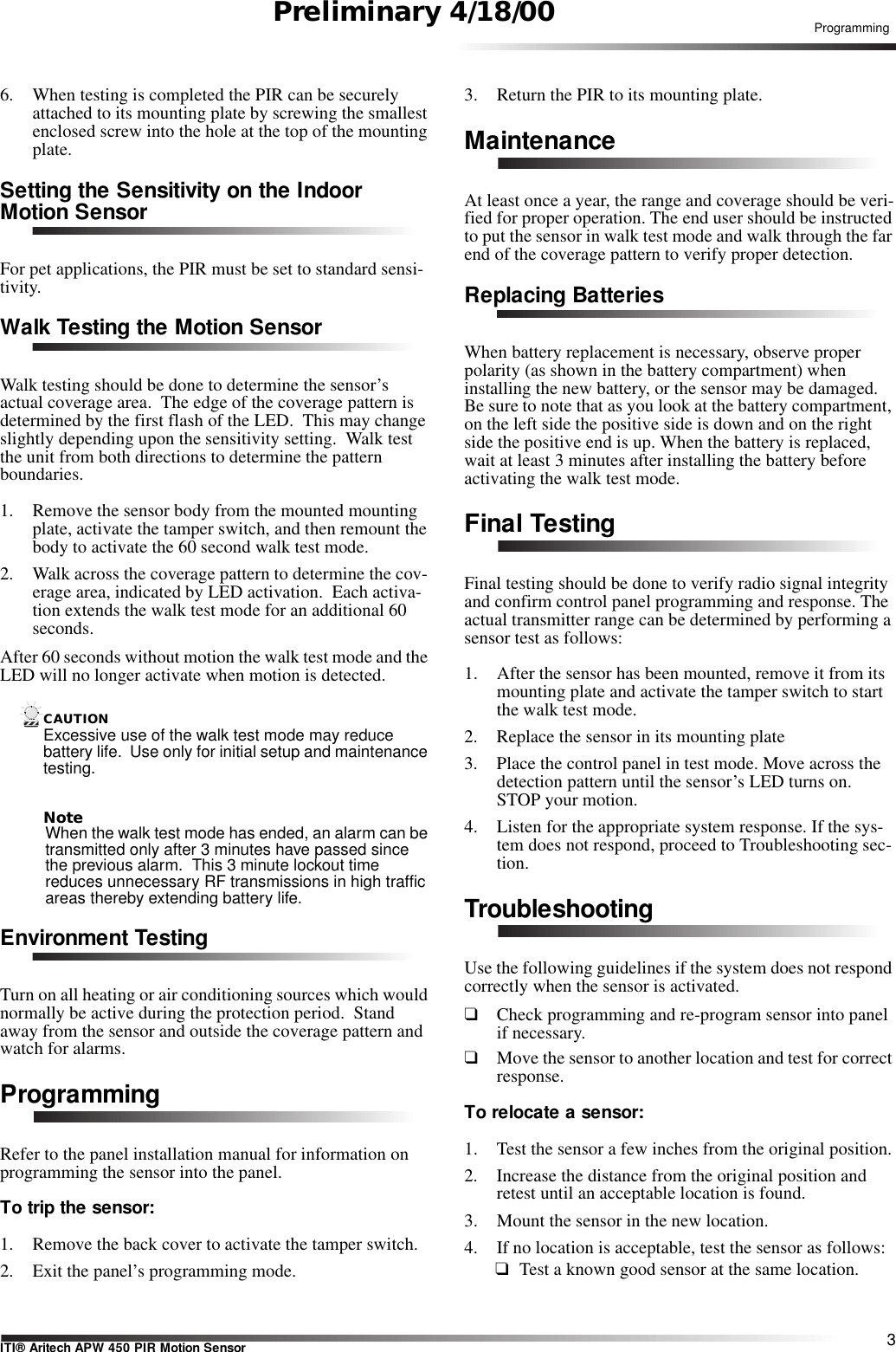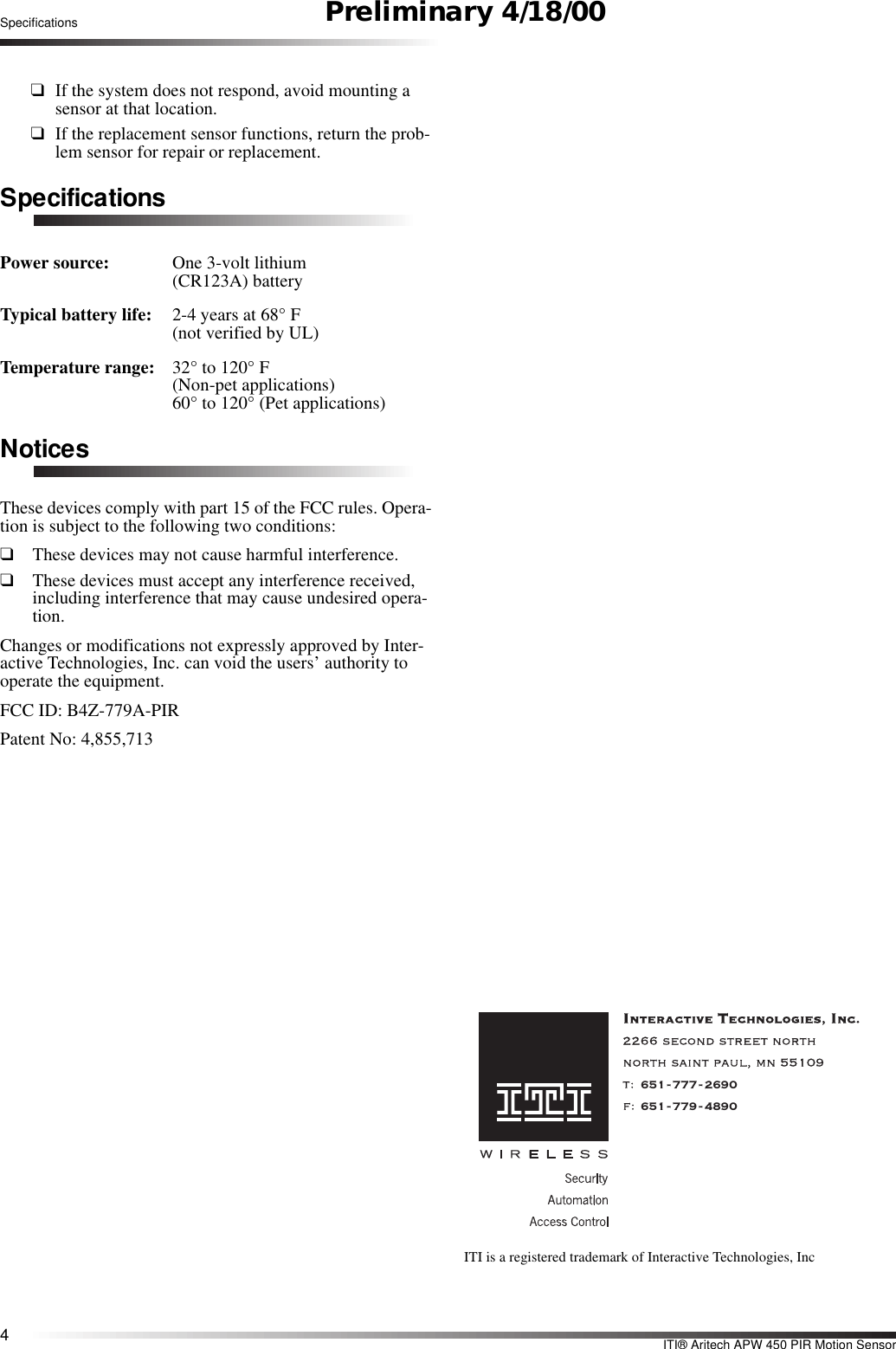UTC Fire and Security Americas 779A-PIR Wireless Passive Infrared Motion Detector User Manual L661812a
UTC Fire & Security Americas Corporation, Inc. Wireless Passive Infrared Motion Detector L661812a
Contents
- 1. Users Manual
- 2. User Manual
Users Manual



